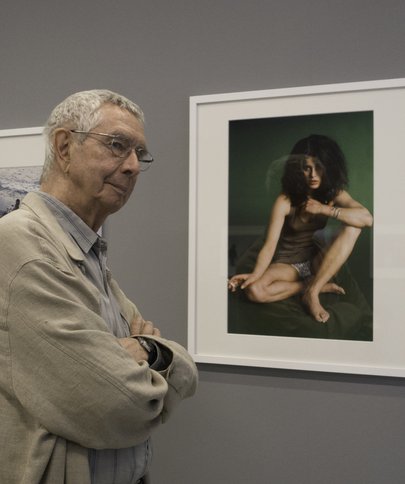Guido Mangold: Happy Birthday!
Guido Mangold has fond memories of 25 November 1963. He photographed John F. Kennedy's funeral in Arlington for "Quick". In order to be able to deliver the photos to Germany without delay, he searches for suitable locations at the cemetery the day before, meticulously calculates the time from there on foot and by taxi to the airport, leaves the scene on the day of the funeral before the countless mourners and 800 reporters set off, catches the plane and is back in the editorial office the next morning. His report is the first, it appears before the competitor "stern".
Mangold, who will be 90 years old on 26 January 2024, describes the coronation of Shah Reza Pahlavi or the reception of Queen Elizabeth II at Brühl Castle as vividly as if he had experienced them yesterday. And he continues to tell the stories behind his pictures with joy and satisfaction to this day. If he didn't casually refer to his walking frame on his current walks, you would forget how old he is.
Mangold lives in Ottobrunn, his adopted home, and he is one of the great German photojournalists of the second half of the 20th century. He became a member of the GDL (now DFA) in 1962. His career began around 1960: at that time, magazines were important for current affairs reporting and competed fiercely for the first picture. He worked for magazines for around forty years, capturing contemporary history with portraits and reports on politics, society and culture. The secret of his success was discipline, empathetic observation and reproduction as well as the gift of capturing stories in pictures.
But at first, photography was more of a dream than a reality: at the age of 14, he had to leave school and complete an apprenticeship in his parents' bakery. As earning money in his profession was difficult in this country, he emigrated to Vancouver and worked as a pastry chef. He pursued his passion for photography in his spare time. After a long period of doubt, winning a Kodak competition encouraged him to professionalise his photography. At the age of 24, he returned to Germany and, on the advice of "fotoform" co-founder Toni Schneiders, studied under Otto Steinert, now unquestionably one of the most influential photographers of the post-war period.
Mangold's first works, such as the portrait of the author Annette Kolb, which won the Milan gold medal, or the reportage on the refineries of the prospering Ruhr region, correspond to the creative vision of his teacher Steinert. His hospital series is also still rooted in the graphic interplay of light and shadow, but the transition to a humanistic visual language is evident here. He sent the sensitive series of pictures to "kontraste". The young Catholic magazine, whose relevance is often underestimated, had an affinity for photography and a new layout and, to Mangold's delight, presented the entire essay and spread it out over an engaging double-page spread. The successful layout not only filled his cash-strapped coffers in the short term, but more importantly, it attracted the attention of layout designer Willy Fleckhaus. He hired him for "Quick" and Mangold's career took off, bringing him international recognition.
This was soon followed by commissions for the provocative magazine "twen", whose revealing nudes of young women reflected the spirit of the student movement. The photographs of Uschi Obermaier in a translucent T-shirt on the beach in Cameroon made the communard famous overnight and Mangold "immortal" as her discoverer.
In addition to "Quick", "stern", "Eltern", "Jasmin" and "Playboy" become important clients. In 1976, "Geo" and "Merian" joined them, for which he produced 70 reports and numerous books. From the very beginning, Mangold's interest in the visual arts was important to him. He not only portrayed the artists, but also studied their respective locations. The "Homage to Edward Hopper: 3rd Avenue in New York" is a photographic interpretation of the painting Nighthawks.
When colour became dominant in the print media at the end of the 1960s, Mangold changed his choice of subjects. The Alps moved into focus. He turned his attention to the simple way of life of traditional farmers as well as the consequences of industrialised tourism.
Mangold, who has travelled all over the world, returns to Ravensburg in his last work and dedicates an empathetic illustrated book to his hometown. He ends his professional life there, where as a young boy he came across Toni Schneiders' pictures in the "Fährmann" calendar and discovered his passion for photography.
Dorothea Cremer-Schacht

